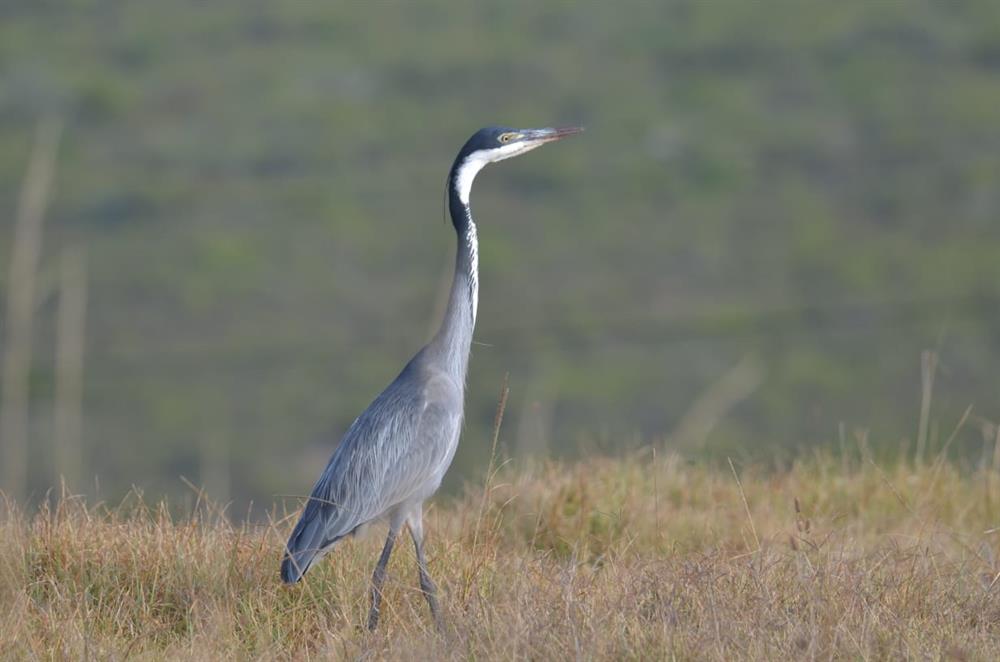Gallery
MOSSEL BAY NEWS - Mossel Bay is becoming more and more of a birdwatching destination.
Since a laughing gull was spotted in town and a red-necked phalarope near Boggomsbaai, interest has grown even more.
The Mossel Bay Advertiser went on an outing with local birder Estelle Smalberger on Friday, 1 April, to discover what the hype is all about.
Having taken early retirement, she considers herself privileged to be a full-time birder and is extremely grateful for this. She has seen 719 species in her five years of birding.
Her Nikon D500 with a Tamron 150-600 lens is always with her.
On the outing with Estelle a dead spotted eagle owl was seen on the road to Vleesbaai and Boggomsbaai. It was fully intact, not flattened on the road, so it was possible to examine the bird. Estelle said many birds were killed on that road for some reason.
With regards to road kills in general, she said they were the worst where there were grain trucks, because the spilt grain attracted rodents, which attracted larger birds such as owls and other predators.
There were two birders' vehicles at the pond where the phalarope was spotted the week before.
Old friends
A man in a bakkie stopped to speak to Estelle while she was parked next to another wetland. The way they chatted like old friends, one would think they knew each other well, but Estelle said she had never met him before. "Birders are like that," she said. They're an extremely friendly bunch.
Estelle says that when she is birding for the whole day, she packs coffee in a flask and some food. That is when she makes a contribution to the Southern African Bird Atlas Project, using an App. The country is divided into grids, so many kilometres square.
One places pin drops with the GPS co-ordinates on the grid, stating the bird species seen. Although the birds may be common species, it is of importance to scientists if they are outside their usual grids.
Among birds spotted on the outing last week were yellow canaries, waxbills, a black-shouldered kite, a jackal buzzard, swallows, yellow bishops, blue cranes, black-headed herons, a white-throated canary and a southern fiscal.
Estelle said a rare Baillon's crake was spotted on a temporary pan near to where the phalarope was seen. It was not there long and the question was asked: "Did the birders' presence chase the shy bird away or did it move on because the pan dried up?"
 Black-headed heron. Photo: Estelle Smalberger
Black-headed heron. Photo: Estelle Smalberger
Habitat changed
Estelle believes it moved on because the pan dried up and also the vegetation around it changed. She showed the Advertiser a photograph of the bird in the lush grass that used to be around the pan compared with the dry, brown grass there currently.
What birders certainly have helped to do, especially in Mossel Bay, is to draw the public's attention to bird life and stress the value of birds.
Estelle's favourite form of birding is going out on a boat from Hout Bay in Cape Town, to see seabirds. She finds this thrilling. The birds flock around fishing vessels because there is much food to eat. "There's a craziness," she exclaims. "There are thousands of birds." And the birding guide, renowned expert Trevor Hardaker, shouts out: "At one o' clock a giant petrel." And so it goes on.
Estelle is proud to have photographed an albatross with a tag on it clearly visible on one of these trips. It had been found to have flown 36 000km.
In Australia's Adelaide Advertiser, Estelle was mentioned in an article and her photograph of the albatross published.

'We bring you the latest Mossel Bay, Garden Route news'















